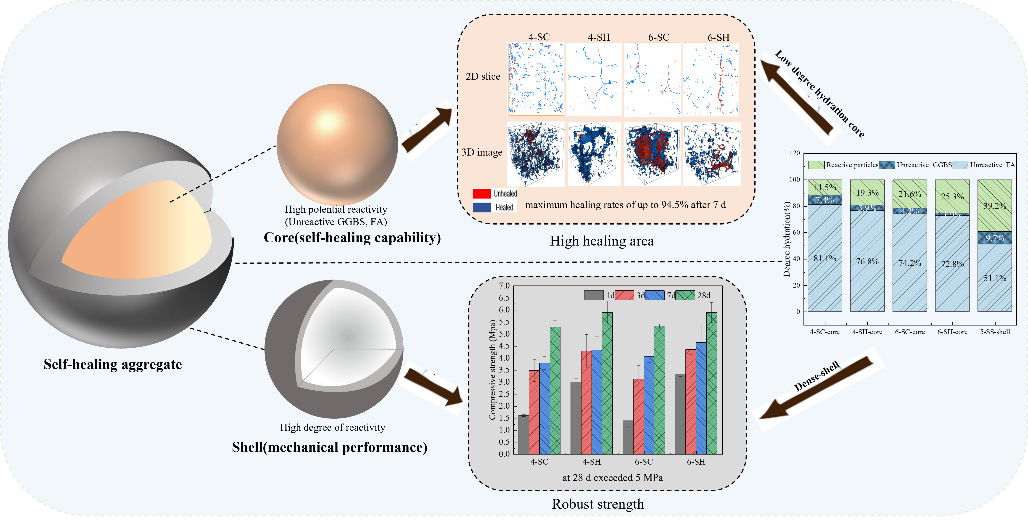On June 29, 2024, Professor Guohao Fang published a research paper titled "Design and Characterization of Solid Waste Based Self-Healing Artificial Aggregate" in Case Studies in Construction Materials(JCR Q1, IF: 6.5). This study investigated the impact of different types of solid waste and alkaline activators on the mechanical and self-healing properties of self-healing artificial aggregates. The paper also verified the feasibility of using multi-source synergistic activation and intelligent regulation to prepare solid wastebased core-shell structured self-healing artificial aggregates. Professor Guohao Fang from the Institute for Advanced Study at Shenzhen University is the corresponding author, ProfessorYanshuai Wang from the College of Civil and Transportation Engineering at Shenzhen University is thefirstauthor,and Shenzhen University is the first contributing institution.
In recent years, the rapid increase in infrastructure construction worldwide has consumed a significant amount of building resources, leading to shortages of materials such as sand and gravel. Currently, the use of industrial by-products to produce artificial aggregates is one of the main research directions and is considered an environmentally friendly strategy due to its low carbon emissions and minimal consumption of natural resources. However, compared to natural aggregates, artificial aggregates exhibit greater shrinkage and creep, resulting in local cracking in the aggregates and interfacial transition zones, which makes it difficult to meet the long-term service requirements of concrete. Therefore, advancing the self-healing capabilities of artificial aggregates when cracks appear will promote their further application in concrete. However, existing research on self-healing artificial aggregates has shown that their self-healing performance is often achieved at the expense of the mechanical properties of the aggregates.Addressing this issue, this paper, based on the theory of multi-source synergistic activation, adjusts the potential reactive activity of self-healing artificial aggregates to prepare core-shell structured self-healing artificial aggregates that balance mechanical properties and self-healing performance. The study demonstrates that the compressive strength of individual particles of self-healing artificial aggregates after 28 days is greater than 5 MPa, with features such as lightweight, low water absorption, and high stability. Additionally, when the aggregates are soaked in a simulated pore solution (saturated Ca(OH)2solution), the main product of the self-healing process is C-A-S-H gel, with secondary hydration reactions playing a dominant role in the healing mechanism. This core-shell structured self-healing artificial aggregate is characterized by its rapid and efficient healing capabilities, achieving a maximum healing rate of 94.5% after 7 days.
This research was supported by the National Natural Science Foundation and the Shenzhen Municipal Science and Technology Innovation Commission.The original article can be found at:https://www.sciencedirect.com/science/article/pii/S2214509524006211

Fig.1.The graphical abstractofself-healingartificial aggregates.


